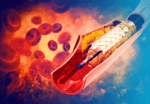Both Acurate Neo2 and its predecessor, Acurate Neo, have proven their safety and efficacy in the percutaneous treatment of severe aortic stenosis. The Acurate platform offers a lower gradient and a larger effective orifice area, as well as a low risk of periprocedural complications, according to previous registries. However, the first-generation Acurate device had some...
Interventional Cardiology: The Most Read Articles of 2023
Discover the most read scientific articles on interventional cardiology of 2022 in our website. No Reflow after Primary PCI in STEMI: An Angiographic Analysis of the TOTAL Study In the early days of percutaneous coronary intervention (PCI) in patients with ST elevation acute myocardial infarction (STEMI), no reflow phenomenon was known as an indicator of...
SOLACI Wishes You Happy Holidays!
The Latin American Society of Interventional Cardiology sends its warmest wishes to our region’s entire medical community in this Holiday season. Thank you for your efforts and dedication invested in improving our patient’s quality of life. We thank all professionals who, in one way or another, took part in the scientific activities and educational projects our Society...
New Advances in Mitral Regurgitation Devices with Promising Results
Mitral regurgitation (MR) is a frequent valvulopathy and when the optimal medical treatment at maximum tolerated doses is not enough, surgery is the first course of action. And even though edge-to-edge repair with clips has seen substantial improvement, it is currently reserved for those at high risk of surgery. However, there is an increasing number...
Heterotopic Tricuspid Intervention: TricValve One-Year Outcomes
Severe tricuspid regurgitation (TR) presents a reserved prognosis when not treated in time, seeing as systemic venous congestion might significantly limit quality of life in these patients. For many years it was thought diuretic therapy was the only option to treat these patients, since the surgical alternative offered suboptimal results and many patients were deemed...
iFR Guided PCI to the LAD: Same as for non-LAD Vessels?
iFR has been validated as a useful tool for intermediate lesion analysis, with the advantage of not requiring the use of drugs. On the other hand, its use for PCI outcome assessment has not yet been thoroughly looked into, even though there have been promising data. 24% of DEFINE PCI cases presented ≤0.89 iFR with...
Can Ultrasound Treat Aortic Stenosis?
Severe calcified aortic stenosis is a common condition that can currently be effectively treated with SAVR or TAVR. However, some patients, given comorbidities or anatomical characteristics, are not good candidates for these therapeutic alternatives. The non-invasive ultrasound therapy (NIUT) has surged as viable alternative. It claims ultrasound might act on calcified valves, and mobilize tissue...
Is AS Only Important When Severe?
Aortic stenosis (AS) is a progressive disease associated with morbidity and mortality, especially in severe cases. However, recent studies have revealed that moderate stenosis can also have unfavorable consequences in the course of the disease. One of the challenges lies in that determining its severity is sometimes difficult due to discrepancies between valve area, gradient,...
CAPTIS, a Novel Cerebral Embolic Protection System in TAVR
The incidence of stroke after TAVR ranges between 2 and 5%, depending on the series, which has been associated with higher morbimortality, affecting patient quality of life and their psycho-social environment. Many cerebral embolic protection systems have been developed in response, and even though they have been shown beneficial in many studies, their role in...
Is TAVR Beneficial in Cardiogenic Shock?
The presence of cardiogenic shock (CS) in a setting of aortic stenosis ranges from 1% to 4%. The prognosis for this scenario is ominous due to subendocardial ischemia, which presents as a decrease in ventricular preload and an increase in afterload. Aortic valvuloplasty has been used in this context, but, unfortunately, it has been associated...








